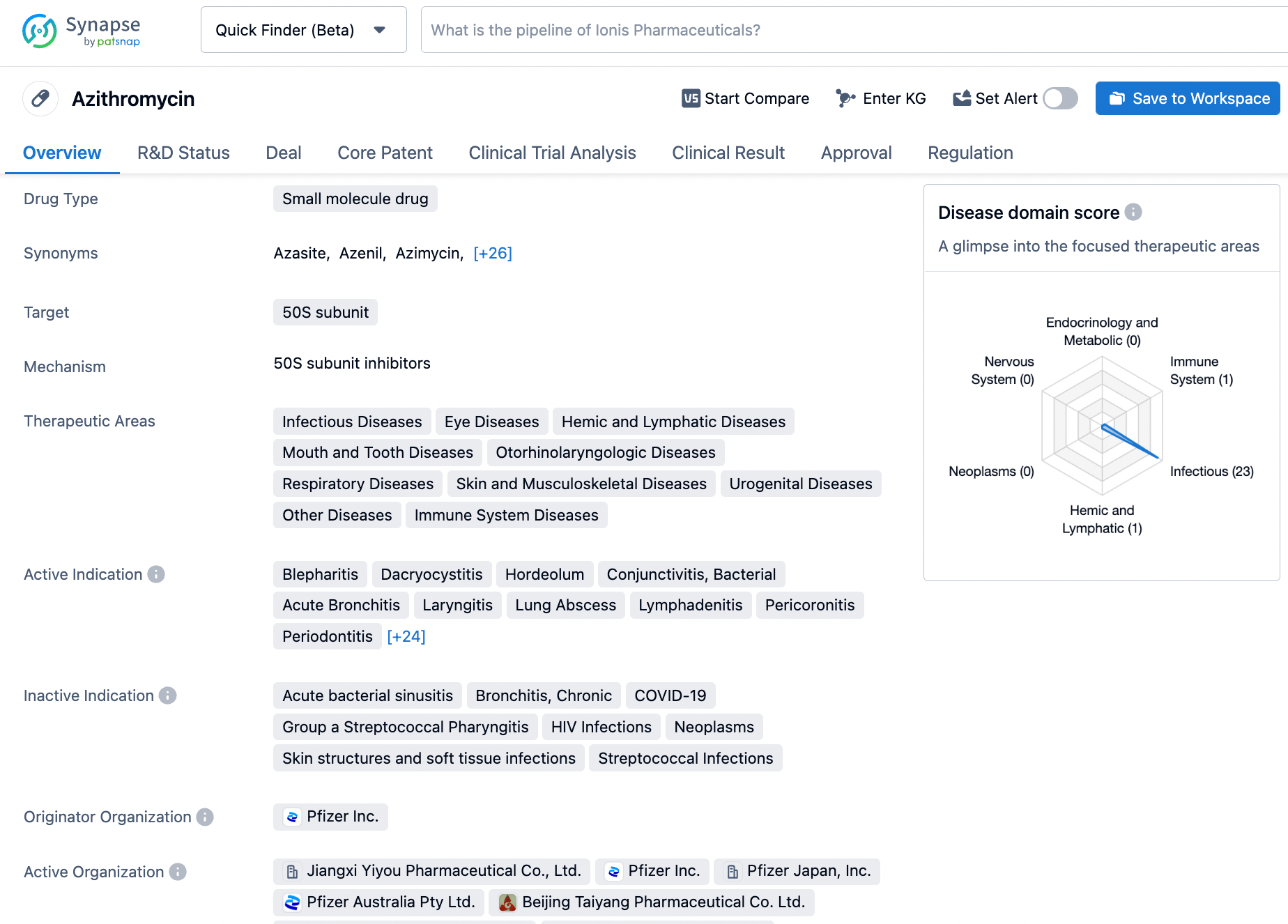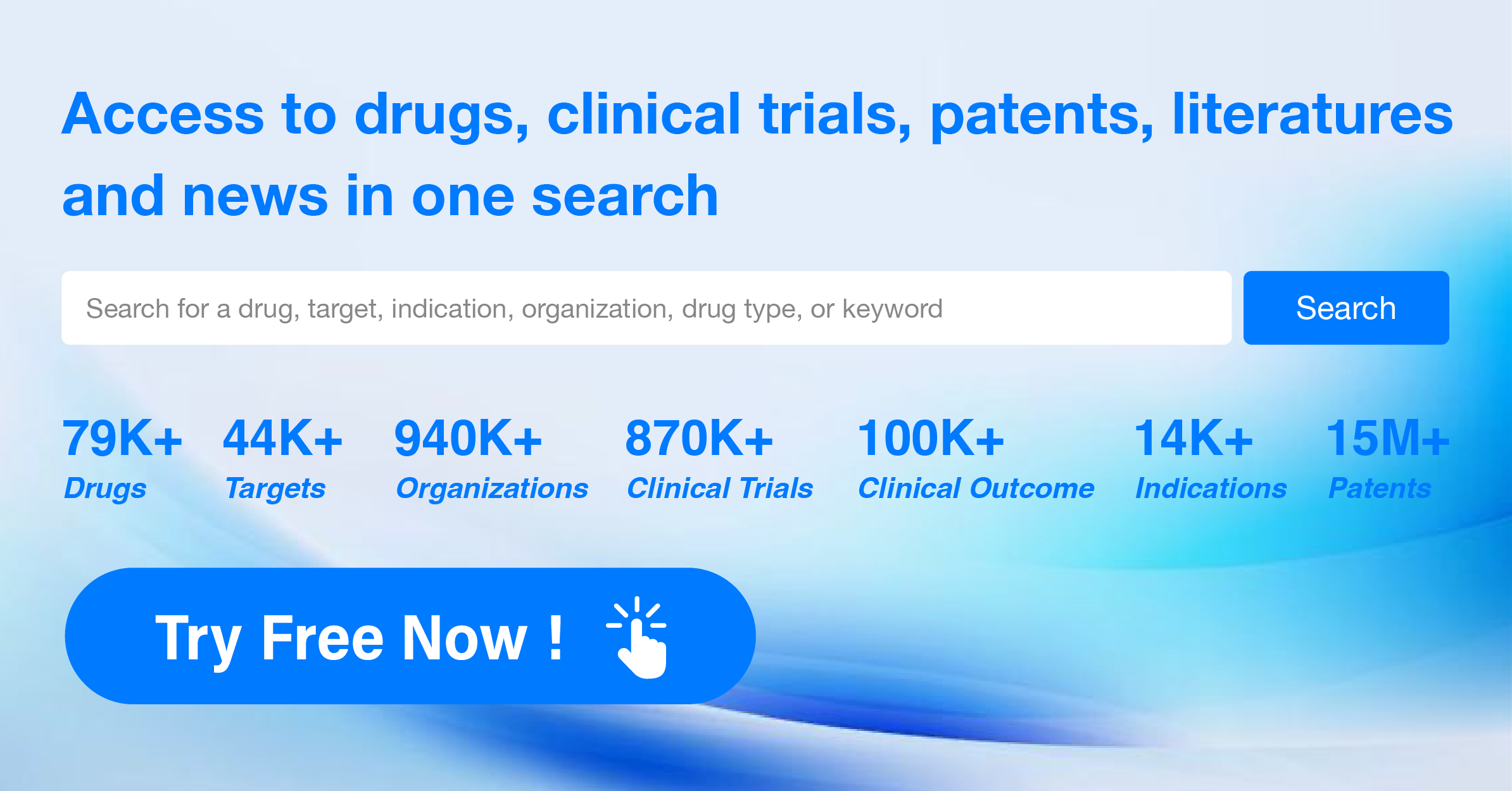Unveiling Azithromycin: How to Search for it on Synapse
Azithromycin, a small molecule drug, works by targeting the 50S subunit of the bacterial ribosome and disrupting protein synthesis, ultimately leading to bacterial death. This drug falls under the class of macrolide antibiotics and is commonly used to treat a diverse range of bacterial infections, such as respiratory tract infections, skin and soft tissue infections, and sexually transmitted infections. It is also used as a prophylactic treatment for certain opportunistic infections in HIV patients. Azithromycin gained FDA approval in 1991, representing a significant breakthrough in the field of antibiotic development. With its broad-spectrum activity against a wide range of bacterial species, Azithromycin is a valuable tool for healthcare providers in managing bacterial infections. However, the overuse or misuse of antibiotics such as Azithromycin can lead to the emergence of antibiotic-resistant bacteria. Therefore, healthcare providers must exercise caution and prudence when prescribing Azithromycin to prevent the development of antibiotic resistance. Overall, Azithromycin is a potent antibiotic that plays a crucial role in the treatment of bacterial infections. Click on the image below to begin the exploration journey of Azithromycin through the Synapse database!
You can search for the latest pharmaceutical information such as drugs, targets, patents, transactions, clinical results, etc. through the Synapse database. Come and experience it!





